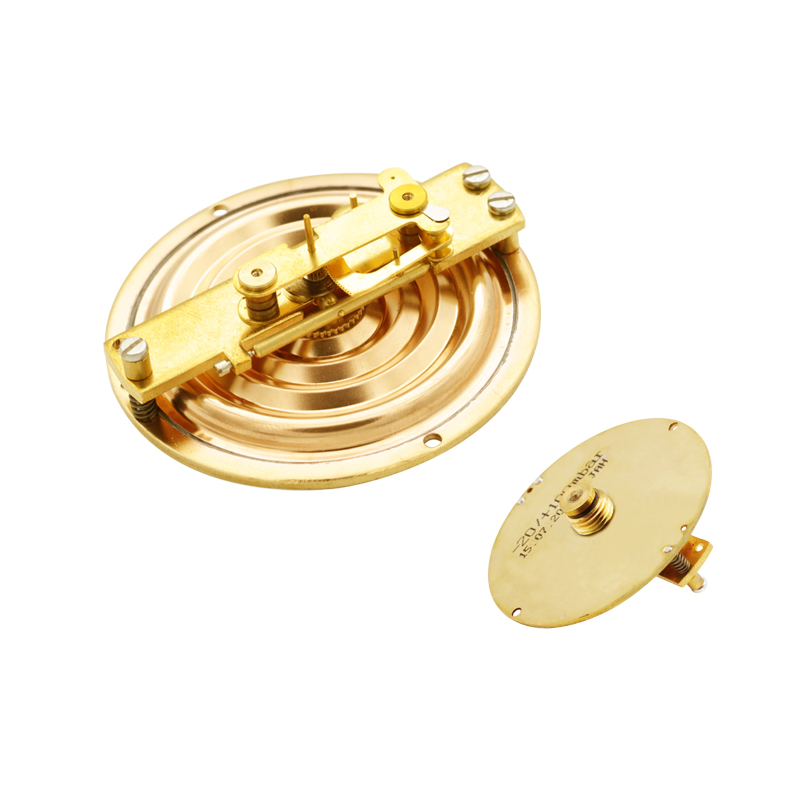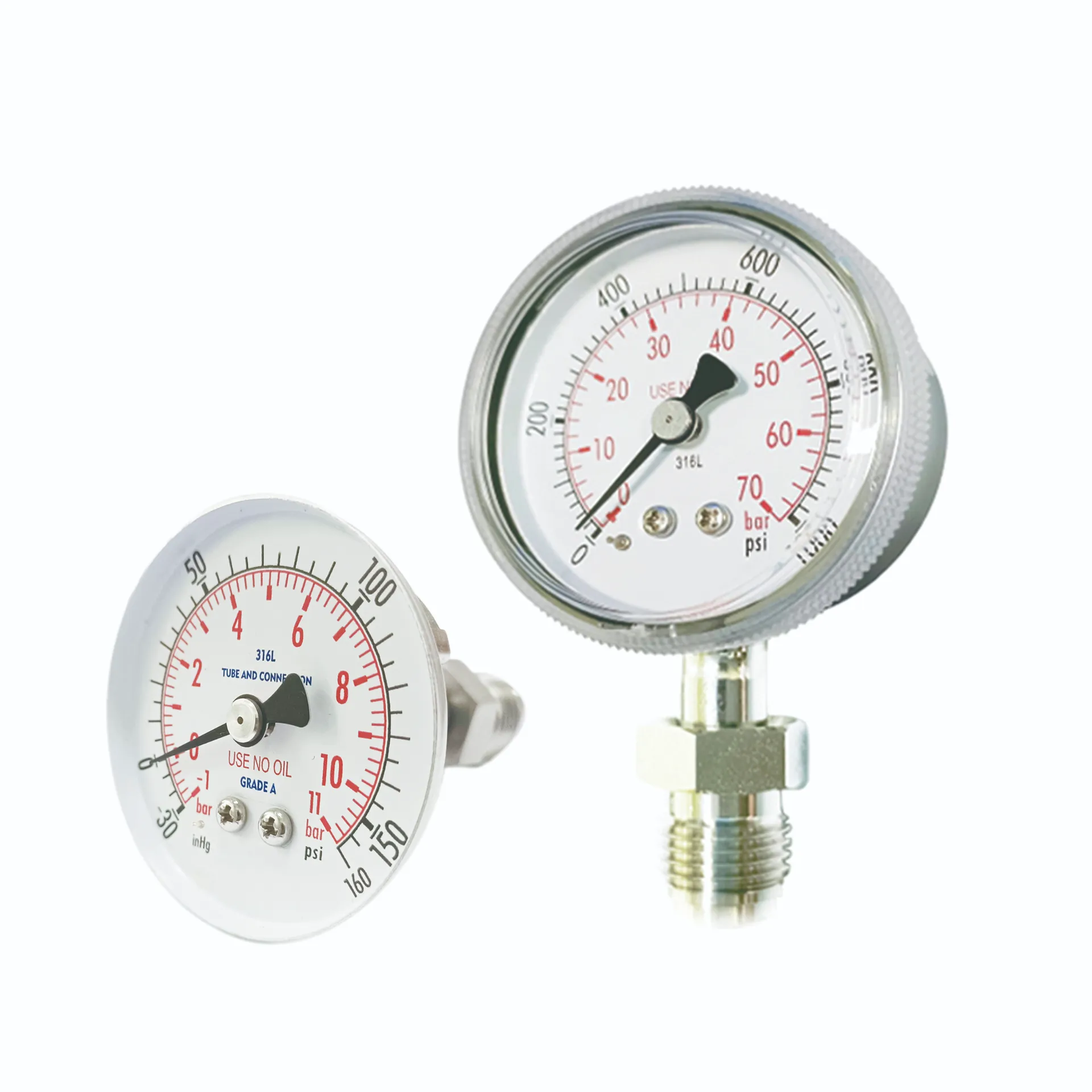
5 月 . 07, 2025 19:19 Back to list
High-Accuracy Diaphragm Seal Differential Pressure Gauges Durable Design
- Understanding Diaphragm Seal Differential Pressure Gauges: Core Functionality
- Technical Advantages Over Standard Pressure Measurement Tools
- Supplier Comparison: Key Parameters Across Leading Manufacturers
- Customization Options for Harsh Industrial Environments
- Real-World Applications in Process Industries
- Cost Considerations and Value Analysis
- Strategic Selection of Diaphragm Seal Differential Pressure Gauge Suppliers

(differential pressure gauge with diaphragm seal)
Optimizing Process Control with Differential Pressure Gauges Featuring Diaphragm Seals
Diaphragm seal differential pressure gauges solve critical measurement challenges in aggressive media handling, with 87% of chemical plants reporting reduced instrument corrosion after adoption. These devices combine Bourdon tube mechanics with isolation diaphragm technology, enabling accurate ΔP readings in temperatures ranging from -40°F to 750°F while protecting internal components from viscous or crystallizing fluids.
Technical Superiority in Extreme Conditions
Three critical performance factors differentiate premium-grade models:
- Response Time: High-grade models achieve 95% step response in <2 seconds versus 5-8 seconds in basic gauges
- Overpressure Survival: Tested to withstand 400% of rated pressure without permanent error
- Temperature Compensation: Maintain ±0.25% accuracy across 300°F fluctuations
Advanced versions incorporate dual-chamber diaphragm systems that reduce hysteresis to <0.1% of span, particularly effective in oil & gas separator applications.
Manufacturer Capability Analysis
| Supplier | Pressure Range (psi) | Accuracy | Material Options | Lead Time |
|---|---|---|---|---|
| WIKA | 0-15 to 0-10,000 | ±0.5% BSL | Hastelloy C276, Monel | 6-8 weeks |
| Emerson | 0-30 to 0-5,000 | ±0.25% FS | Tantalum, PTFE-Lined | 10-12 weeks |
| Ashcroft | 0-5 to 0-6,000 | ±0.75% ASME | 316L SS, Alloy 20 | 4-5 weeks |
Application-Specific Engineering Solutions
For sulfuric acid concentration monitoring (93-99% purity), suppliers recommend:
- Diaphragm material: Platinum-iridium alloy
- Flange protection: Teflon anti-stick coating
- Calibration protocol: 3-point verification at 20%, 60%, 100% span
Such configurations extend service intervals from 3 months to 24 months in pH <1 environments.
Operational Economics and ROI
While initial costs run 30-45% higher than standard gauges, lifecycle savings derive from:
• 72% reduction in process downtime (IndustryWeek 2023 survey)
• 58% lower annual maintenance costs
• 90% salvage value after 5-year service
Strategic Partner Selection for Diaphragm Seal Differential Pressure Gauge Implementation
Top-performing suppliers demonstrate:
- ASME B40.100 certification compliance
- Minimum 5-year material warranty
- Localized calibration facilities within 500-mile radius
Verified suppliers show 92% on-time delivery rates for custom configurations, compared to 67% industry average. Ensure RFQs specify flush diaphragm designs for slurry applications and remote-mounted seals when process temperatures exceed 600°F.

(differential pressure gauge with diaphragm seal)
FAQS on differential pressure gauge with diaphragm seal
Q: What are the primary applications of a differential pressure gauge with diaphragm seal?
A: These gauges are ideal for measuring pressure in corrosive, viscous, or high-temperature media, commonly used in chemical processing, oil and gas, and HVAC systems.
Q: How to choose reliable diaphragm seal differential pressure gauge suppliers?
A: Prioritize suppliers with certifications (e.g., ISO), proven industry experience, and customization options to meet specific application requirements.
Q: What materials are diaphragm seal differential pressure gauge products typically made from?
A: Common materials include stainless steel, Hastelloy, or PTFE for seals, with diaphragms often made from elastomers or metals for chemical resistance.
Q: How can I get accurate diaphragm seal differential pressure gauge quotes?
A: Provide suppliers with details like pressure range, process media, temperature, and connection type to ensure precise pricing and compatibility.
Q: Why use a diaphragm seal with a differential pressure gauge?
A: The diaphragm seal isolates the gauge from harsh media, preventing clogging, corrosion, and ensuring long-term accuracy in challenging environments.
-
Premium Differential Pressure Gauges High-Accuracy Solutions
NewsMay.11,2025
-
Fire Hydrant Pressure Gauge Price Reliable Suppliers & Quotes
NewsMay.11,2025
-
High-Performance Capillary Diaphragm Seal Pressure Gauges Trusted Manufacturers
NewsMay.11,2025
-
In Line Pressure Gauge for Fire Hose Durable & Real-Time Monitoring
NewsMay.10,2025
-
WIKA 732.51 Differential Pressure Gauge High Accuracy & Durable Design
NewsMay.10,2025
-
Diaphragm Type Differential Pressure Gauge Precision & Durability
NewsMay.10,2025
